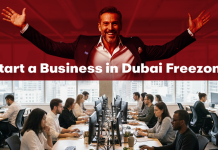Did you know that employee engagement in the U.S. reached its lowest level in a decade in 2024, with only 31% of employees feeling engaged? This highlights the importance of improving employee engagement.
Today, we are going to walk you through 6 simple but highly effective employee engagement strategies to transform your workspace culture and drive long-term success.
These strategies are designed to help you:
- Connect with your team
- Boost motivation
- Improve retention
All of which can lead to:
- Higher productivity
- Happier employees
- More positive work environment
Why should you care about learning how to improve the experience of employees?
When your team is engaged, they are more likely to be:
- Motivated
- Perform at a higher level
- Remain with your company long-term
By mastering these engagement strategies, you will build a more connected, motivated, and loyal workforce with a better place to work.
Unfortunately, many managers and leaders fail to improve employee engagement because they face a few common obstacles.
The first and primary reason why so many fail is that they lack clear, actionable steps.
Other reasons include:
Reason 1: Overcomplicating engagement
Reason 2: Lack of leadership buy-in.
Reason 3: Not actively listening to employees’ feedback and adjusting strategies.
Reason 4: Failure to measure impact
But here is the good news: You can overcome all of these challenges. Here, we will break down each step for you on how to implement simple, effective strategies that are easy to follow and will make a meaningful impact on employee engagement.
1) Frequent Recognition and Appreciation
Both are so important in the workplace because they directly influence:
- Employee motivation
- Engagement
- Retention
When employees feel genuinely valued and acknowledged for their contributions, they develop strong emotional connections to their work and organizations.
How You Can Effectively Include Frequent Recognition and Appreciation Programs
1) Peer-to-Peer Recognition Wall
Consider dedicated recognition tools where employees can publicly post:
- Shout-outs
- Thank-you
- Teammates’ contributions daily
2) Give Customized Products
You can give products that are both practical and personalized to improve employee engagement, such as:
- Custom apparels
- Office supplies
- Custom drinkware
3) Points and Rewards System
Employees earn points for:
- Achievements
- Living core values
- Peer recognition
4) Public Recognition Newsletters
Highlight employee successes and contributions regularly in the internal newsletter.
2) Career Growth Opportunities
Many organizations go wrong with career development opportunities by not offering clear, transparent, and personalized development paths as per employees’ goals and potential.
Many organizations make common mistakes, such as:
- Providing generic, one-size-fits-all training programs.
- Lack of communication about how promotions work.
- Irregular mentorship or feedback.
- Focus only on leadership roles, not on career growth, for mid-level employees.
Why This is a Mistake
When career growth feels unclear or not personalized, employees can get:
- Frustrated
- Feel disengaged
- May leave for better opportunities
How To Avoid This Mistake
- Create clear and easy-to-understand career paths for all roles and levels within the company.
- Work with employees to create personalized development plans together with their managers.
- Offer regular feedback, mentoring, and coaching to guide their progress.
- Be transparent about the skills and experiences needed to move up.
- Use digital tools to help employees see and transfer their growth journey.
3) Work-Life Balance Support
Imagine a work environment where you are working without sacrificing your personal well-being or time with loved ones. Work-life balance is important because it leads to:
- Less burnout
- Increased productivity
- Greater employee satisfaction
When your team feels supported in balancing their professional and personal lives, they will be more motivated, engaged, and loyal.
Here are three actionable steps that you can take:
- Create a results-oriented work environment (ROWE).
- Provide access to digital well-being tools like Headspace, Calm, etc.
- Encourage flexibility in how employees structure their workday.
4) Celebrate Business Anniversary
A business anniversary is more than a date. It is an occasion to recognize your team’s hard work, reinforce company culture, and strengthen relationships with employees, clients, and partners.
Here are three actionable steps to celebrate a business anniversary meaningfully:
- Employee recognition awards ceremony
- Organize fun games
- Conduct a formal event
5) Real-Time Feedback Loop
It is important to create a culture of continuous improvement and engagement. In today’s world, waiting for annual reviews or scheduled check-ins is no longer sufficient.
Real-time feedback helps employees:
- Quickly adjust
- Feel supported
- Know they are on the right track
All of which leads to:
- Increased productivity
- Job satisfaction
Retention
Here are three actionable steps to put it into practice:
- Use collaboration tools for immediate feedback during or after a meeting.
- Incorporate AI-powered feedback tools.
- Encourage continuous peer-to-peer recognition.
6) Virtual Engagement for Remote Teams
It is easy for employees to feel disconnected or isolated when teams are dispersed. Virtual engagement for remote teams is more important than ever as more companies opt for flexible work arrangements.
Engaging remote teams through virtual channels helps:
- Develop a sense of belonging
- Boosts morale
- Ensures that team culture remains strong
Here are three actionable steps to enhance virtual engagement:
- Host regular virtual team-building activities.
- Create a virtual “watercooler” space.
- Implement virtual recognition programs.
Bottom Line
Employee engagement isn’t a one-time fix. It is an ongoing journey that needs intention, effort, and consistent action. You can create a workspace with the above employee happiness and satisfaction tips that help retain and motivate your current teams. Ensure that you follow the above strategies and periodically measure their impact to determine what works in the long term.






































